I continue on the Carnegie Library trail on this one. I posted an article written about the library history and how small-town Iowa began to forge the way for other small towns to establish libraries in their community. Hawarden was one of the first for small-town, and it goes to show how big the momentum was for these projects.
This library is the only Carnegie Library in Sioux County and represents a monumental time in literary history with the establishment and growth of the Andrew Carnegie Libraries across the U.S.
Here is the background story:
“About forty-one years ago, the Mutual Improvement Club voted to nominate a committee to raise funds for the purpose of establishing a library as part of their altruistic work. Three hundred dollars had to be raised before an organization could be considered eligible to receive a donation of five hundred books from the library of the Good Templar’s Lodge, at that time discontinued. This committee was unsuccessful in raising the money. Mrs. Barber, not satisfied to drop the issue, interested several of Hawarden’s public-spirited citizens to the extent that an organization was then formed called the Hawarden Library Association. The appointed committee started on its campaign to raise the necessary funds for public subscriptions. Mrs. Barber conceived of the idea of covering the country territory as well as the town by use of her pony and cart. The money was raised and the library established and given space within the Independent office. The women of the library board took turns in keeping the library Reopen after the state librarian from Des Moines had helped to classify the books and had given instructions and procedures. One of the men on the board donated his services as bookkeeper and treasurer. Thus the work was carried on for over a year. Foreseeing that financial aid was necessary for continuation, the library association decided to turn the library over to the city of Hawarden so that a one-mill tax could be levied for its support. The mayor appointed a committee to carry on the work with Mrs. Barber acting as president, a position which she held for ten years. Envisioning the day when the space in the Independent office would not be adequate for the growing needs of the library, Mrs. Barber attended the
district meeting of the library board in Sioux City to find out if and how Hawarden could procure a building through the Andrew Carnegie Foundation. She was told it would be impossible as towns of less than ten thousand population were not eligible for donations unless she could convert Mr. Carnegie. A challenge like this meant action where Mrs. Barber was concerned, and she wrote to Mr. Carnegie stating the need for larger library facilities for Hawarden’s growing population. She also wrote her cousin, Mr. Whitlow of New York, later U.S. ambassador to England, asking him to personally present the urgency for funds to build libraries in smaller towns to Mr. Carnegie. In October 1901, Mrs. Barber received a letter from Mr. Carnegie enclosing a check for five thousand dollars made payable to her personally for disbursement and stipulating a minimum of four hundred dollars a year expenditure for library upkeep.
This letter is one of Mrs. Barber’s prized possessions. She also received a letter from her cousin, Mr. Reed, stating that this sum was one thousand dollars more than was usually granted to towns with this small. This was also the first instance of towns under ten thousand population being awarded funds from the Carnegie Library Foundation. Thus Hawarden had the unique record of having hard and fast rules broken on her behalf to the mutual benefit of all libraries in a smaller town. Building plans for the first library anticipated the need for basement room for smaller children which has since materialized. High standards can be maintained through personal interest and perhaps greater financial aid so that it will continue to merit the name of Carnegie.”
The rest of my story with Hawarden
I showed up to Hawarden and found the library, but was baffled because I could tell immediately that the modern architecture didn’t make it an Andrew Carnegie Library. It was too modern, and so below is the picture that I saw when coming up to the library.
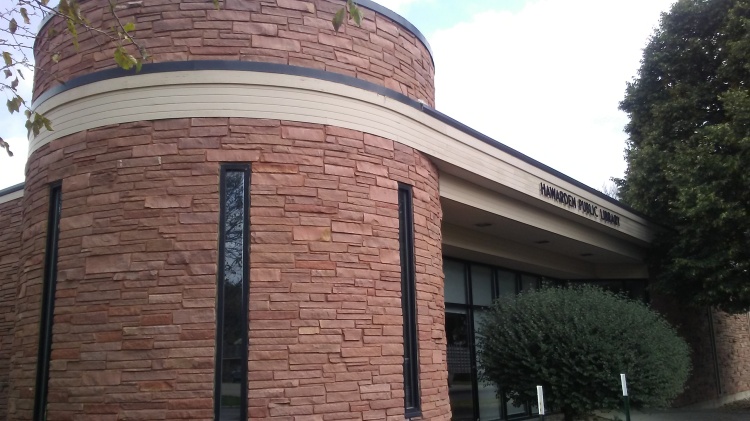
So after figuring out quickly that this modern library didn’t fit the bill, I circled around the building and this is what I discovered.
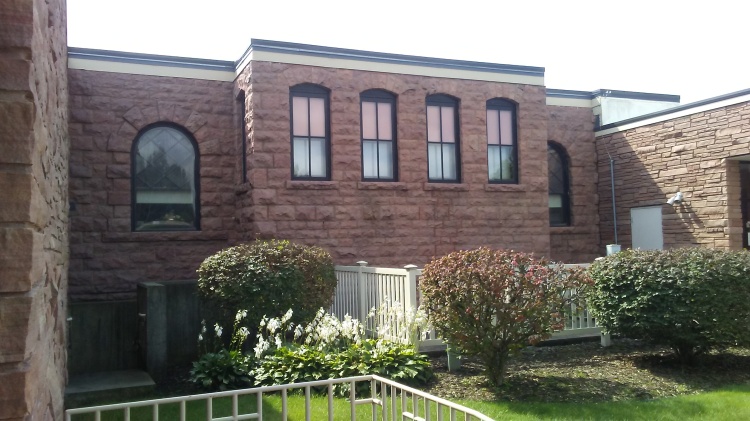
And there it is……
Rather than tear down the existing library when it lost its functionality due to space and handicapped inaccessibility the city of Hawarden made the wise decision to build AROUND the standing structure.
It’s a brilliant design and keeps the history of the original library still standing and keeping it with its original purpose as a library.
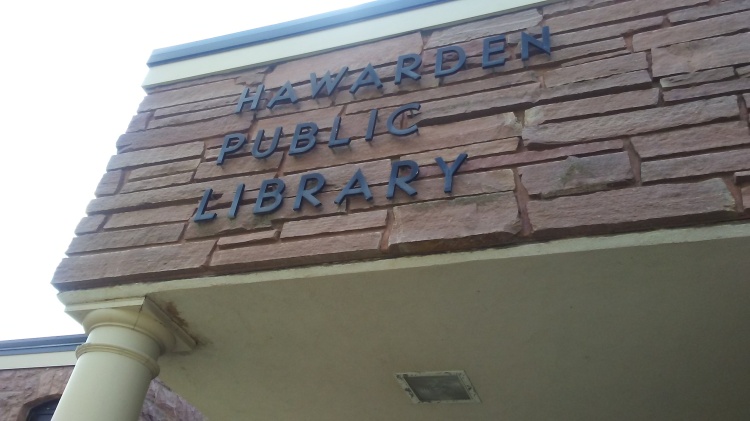
Below is the original Carnegie Library in Hawarden Iowa.
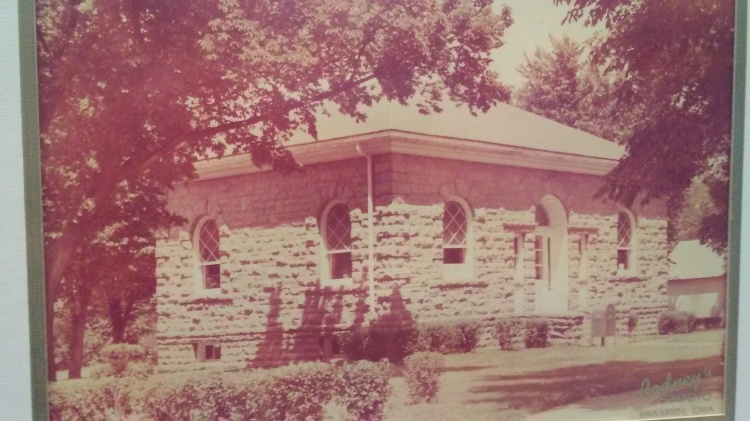
You can clearly see in the picture how the town of Hawarden out grew the little space that the original building provided. What I find interesting with this specific Carnegie Library is the window design.
And this is what I discovered when I walked INTO the library. Check out the original stone and windows!!
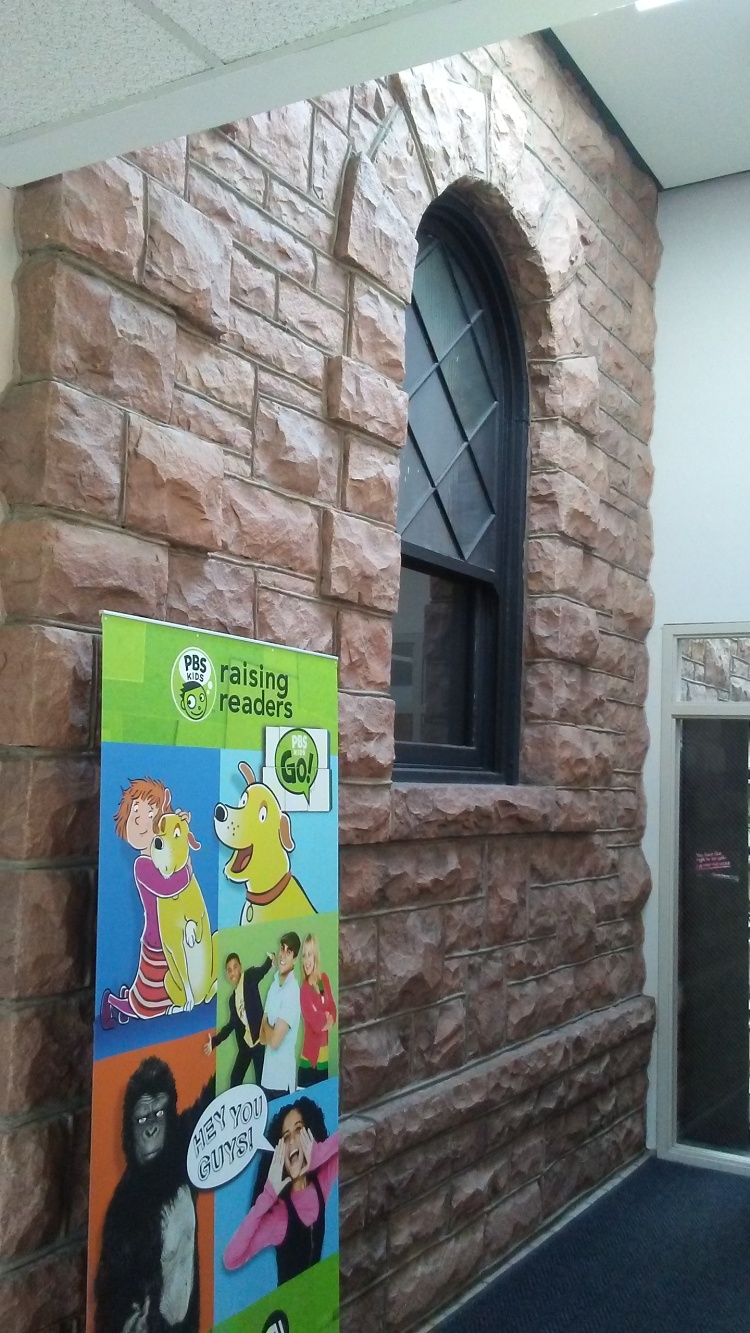
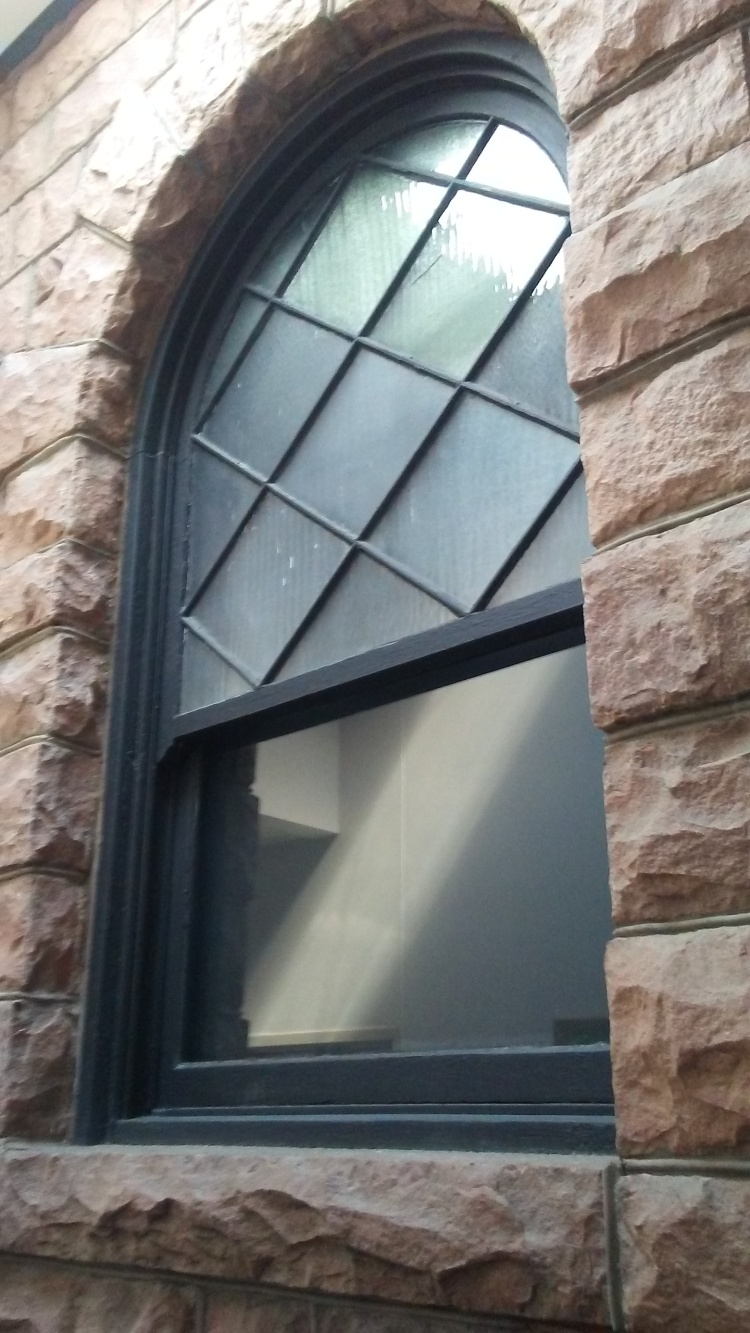
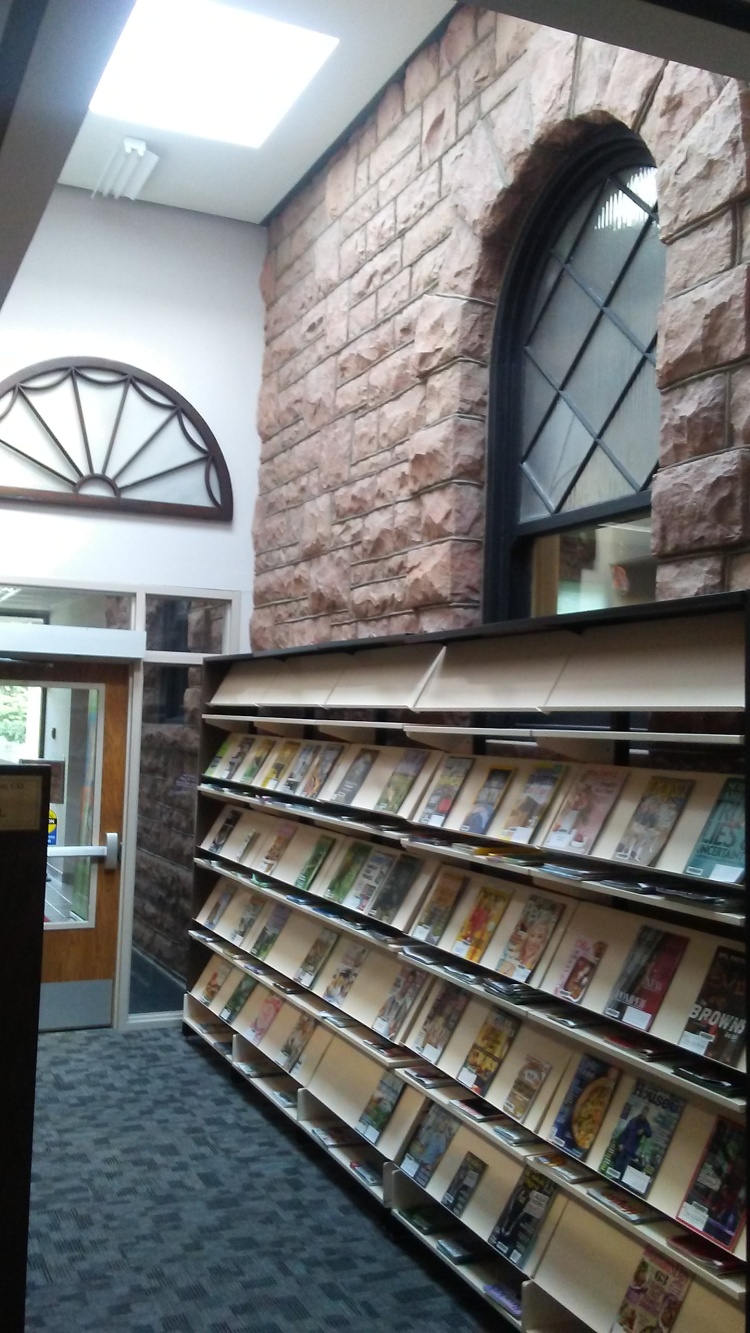
and going around the corner and up a set of stairs you find yourself in the new children’s section which is in the original core or the building.

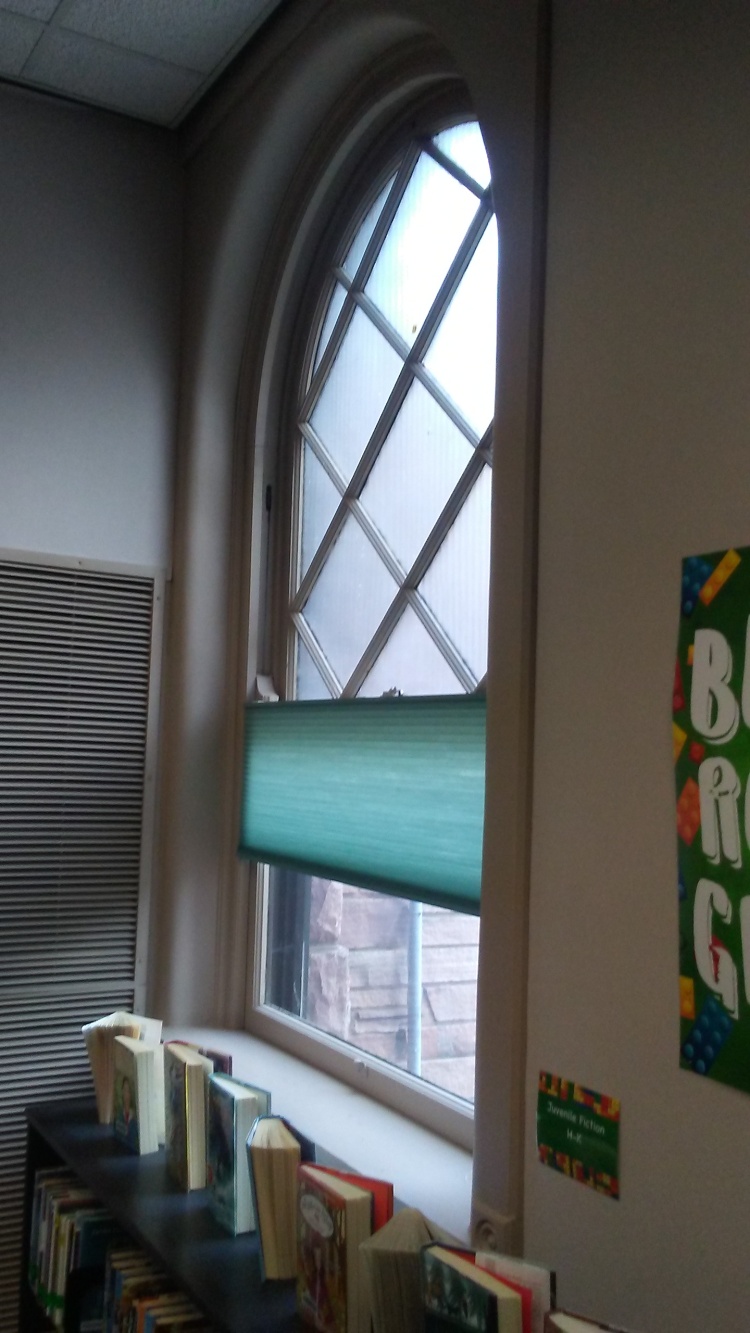
It’s an interesting story of the original 102 (approx.) Carnegie Libraries built in Iowa, only about 55 of them still maintain their original use as a library. It’s an interesting part of Iowa Literary History, and if you have a chance to catch a Carnegie Library, do it. Stop and check out the building, the history, the specific story, and the architecture. It’s worth a pause. Like standing watching an air show and watching the most beautiful Spitfire come from the clouds like an angel on wings! = )
Happy Reading!